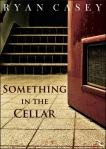It’s no secret that I’m a huge Kobo fanboy. Kobo was my introduction to e-books, and I’ve never tried another platform (beyond installing other companies’ apps on my Kobo), and I don’t really care to. I’ve found a nice home there, and that works for me.
One thing I really like about Kobo as a company is that they truly support their Indie Writers. Kobo Writing Life is a great program, as many Indies can attest. But for the most part (and this is just my opinion), Indie books are still somewhat underground–someone has to point them out to you. Fortunately, that’s changing quickly–and Kobo has an innovative way to help bring about that change.
J.F. Penn is well known enough in the Indie world that she doesn’t need an introduction. Suffice it to say that the author of the Arcane series is at the forefront of our industry, and an incredible representative of the Indie Community. She’s a powerhouse, to be sure, and a concrete example of how writers like us can make this work. Now, Penn is working with Kobo to present a truly unique contest: The Decent.
The short of it is this: for three weeks, Kobo will release a short story written by Penn. Within those stories is a series of clues which the reader has to ferret out and assemble. This will lead the reader to a secret web page where they can enter to win a grand prize of $5000. Sounds like fun, right? Well, here’s the best part: all of this is part of a promotion for Dan brown’s coming novel, Inferno.
Okay, hear me out before you browse away from me. I can hear you now: this blog is about the Indie community, why are you writing about a contest for a Dan Brown book? Believe me, I had my own reservations at first. I enjoy Brown’s novels, but let’s be honest–they’re not the pinnacle of English Literature. And he’s about the furthest thing away from an Indie writer you could imagine. So why write about it here?
The reason is that this puts Indie writers squarely in the spotlight. Well, one writer in particular, but this is important: J.F. Penn, a voice of the Indie Community, is being advertised alongside Dan Brown. People who are lusting after Brown’s book will learn about Penn–and when they learn about Penn and her self-publishing success, they may explore more Indie writers. Even better, it validates our industry; if Dan Brown is in the big leagues and Penn is playing ball with him, it reflects very well on the rest of us.
Now, to be honest, there are those who will read Penn’s stories, click through to the contest without realizing who she is in the Community, and never give Indies a second thought. But there will be those who are intrigued enough by her work to explore her other books; they’ll see that she operates under her own imprint, The Creative Penn, and isn’t attached to a large publishing house; they’ll visit her webpage and see that she offers marketing advice for people wanting to publish their own books. And that is a direct open door to the Indie Community. And besides all that, the very fact that Kobo is associating Brown with an Indie writer in this way is very telling: it shows that they have a stake in the Indie community, and are willing to invest in us in a real way. This contest might be going out to the world, but really, I think the Indie Community has already won.
I thought about reviewing Sins of Temptation, the first of Penn’s three stories, but have decided against it. I wouldn’t want to inadvertently give spoilers that turn out to be clues. If someone wants to enter this contest, they should run the gamut themselves. I will say this about it: it’s decent, and left me wanting more. It’s rather short, though it’s intended to be. And it has a distinct flavour to it that is more than reminiscent of Brown’s novels. Which, I should add, I think is a good thing.
But don’t take my word for it. You can find the first entry here, and it’s free! The second entry was supposed to be released today, but was available online Wednesday–you can find Sins of Violence here. The third and final story will be released next week. This contest is exclusive to Kobo, however, so if you don’t have an account you’ll have to make one. The account is free too, and Kobo has a great store, so you won’t be disappointed. Finally, if you don’t have a Kobo, keep in mind that they have several apps that can be run on different devices, or even on your computer.
So go out, pick up the books (supporting a fellow Indie) and spread the word–the more people who see this, the better it is for all of us. Happy sleuthing!
This contest is run and operated by Kobo Inc. You can find the full rules and conditions here.


